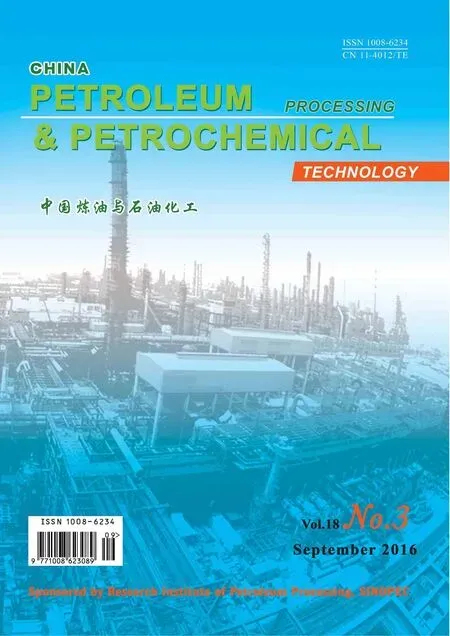Successful Application of LTAG Technology at Qingdao Petrochemical Company
2016-02-04
Successful Application of LTAG Technology at Qingdao Petrochemical Company
Recently the LTAG technology combining selective hydrotreating of FCC diesel fraction with selective catalytic cracking technology for producing high-octane gasoline developed by the SINOPEC Research Institute of Petroleum Processing (RIPP) has been applied at the SINOPEC Qingdao Petrochemical Company (QPC) following the successful commissioning of the process unit at the frst attempt. This is the second commercial unit adopting the LTAG technology following its frst successful application in commercial scale at the SINOPEC Shijiazhuang Refning and Chemical Company, Ltd.
The LTAG technology is an optimized combination involving a selective hydro-saturation unit and a selective catalytic cracking unit that can first selectively hydro-saturate the polynuclear aromatics in FCC diesel fraction to naphthenic and aromatic hydrocarbons which are then subject to selective catalytic cracking to maximize the yield of high-octane gasoline or C6—C8aromatics.
Before the catalytic cracking unit was revamped to operate in line with the LTAG technology, the FCC diesel fraction at the Qingdao Petrochemical Company was sold as a bunker fuel oil. Starting 2015 the oversupply of diesel fuel was aggravated in China, and the sales of FCC diesel have been mired in doldrums. In the meantime, the accelerated upgrading of fuel quality has resulted in high cost of gasoline blending component obtained via hydro-upgrading of FCC diesel fraction. In order to enhance the economic and social benefts, QPC has made a decision to retrofit the FCC unit to adopt the LTAG technology. The preliminary calibration data collected after commissioning of the process unit have revealed that the gasoline yield has been signifcantly increased, with the gasoline octane rating boosted by 0.4—0.6 units, indicating that the outcome of application of the LTAG technology is better than the design targets of this unit.
杂志排行
中国炼油与石油化工的其它文章
- Effect of Magnetic Field on Tribological Properties of Lubricating Oils with and without Tricresyl Phosphate
- Preparation and Lubricating Properties of A New Antibacterial Emulsion Containing Nano-TiO2for Cold Rolling Strips
- Prediction of Coke Yield of FCC Unit Using Different Arti fi cial Neural Network Models
- An Extraction Process for Optimal Utilization of Naphtha Based on Molecule Management
- Hydrodynamic Characteristics in an External Loop Airlift Slurry Reactor
- Microwave-Assisted Synthesis of Poly(Aspartic Acid-Itaconic Acid) Copolymer and Its Characterization
